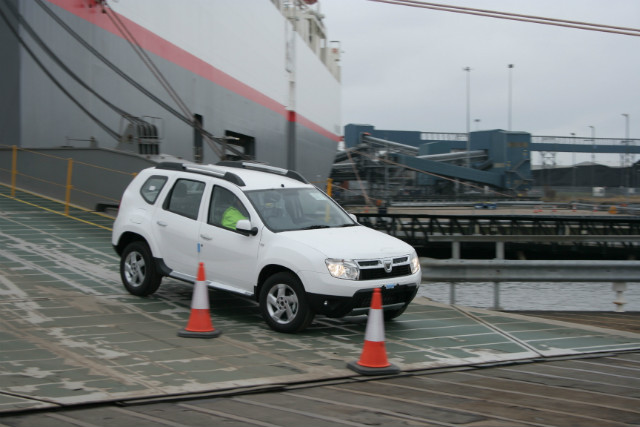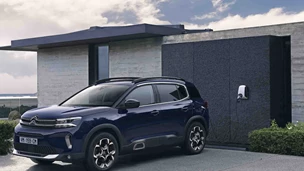There are various possible reasons as to why a motorist in the UK may choose to import or export a car.
Perhaps it’s because a good deal on a well-equipped car has been found, or someone wants to drive an obscure model not sold in Britain. Or maybe a driver is permanently moving to a new country and wants to take their current car with them.
Whatever the reasoning, there are various procedures that people looking to import and export a car need to be aware of. So whether you’re looking to do either, or are just curious to learn more, here’s our guide to importing and exporting cars.
What is car importing?
Car importing is when a car originally built to be sold in one particular country is brought into a different country to be used there instead.
Depending on what countries are involved and the owner’s preference, a car may be imported by sea, air or by road.
Is it legal to import a car?
Provided you follow the correct procedures and the car you plan to import meets the relevant regulations, it should be perfectly legal for you to import a car to Britain from pretty much any other country in the world.
Importing a car to Britain from another European country or vice versa will be more straightforward, however, as there will likely be less legal obstacles for you to overcome.
Insurance for an imported car
There are numerous insurance providers in Britain that should be able to provide cover for imported cars. Even then however, some providers may refuse to give import car insurance at all if the car was meant for a market outside of Europe.
Getting affordable insurance for imported cars can be a challenge, but it’s easier if you’re importing a car from another European country rather than outside of it. Performance figures tend to have a great influence on insurance premiums so if you’re thinking of getting an imported sports car, particularly from outside of Europe, consider your budget carefully as a substantial insurance premium is likely to ensue.
What are the benefits/advantages of importing a car?
There are several factors which can inspire someone to import a car from a foreign country. One of main attractions is that it allows you access to interesting cars which you would otherwise never get to drive if you focused only on the local market. Some rare and desirable models could potentially be found elsewhere in Europe or beyond the continent.
Other potential benefits are that an imported car could ultimately work out as cheaper than a local alternative. Imported cars outside of Europe may also be better equipped or more luxurious compared to similar priced cars here. Importing a car may also be a way of beating UK waiting lists and if the import comes from a country with a warmer climate, it’s less likely to suffer from rust.
What are the disadvantages to importing a car?
The potential pitfalls one could face when importing a car depends on which country it was originally marketed for. One of the main potential issues is that an imported car may come in left-hand drive only and a driver may have difficulty adapting to the change.
It can also be difficult to get a hold of an imported car’s service history, particularly if it’s from outside of Europe, and neither a warranty or replacement parts are likely to be included.
Other potential issues to consider is that the speedometer might read in kilometres per hour (kph) rather than miles per hour (mph) and the onboard radio and sat-nav may not function properly. The engine may also be designed to suit a type of fuel not commonly available in Britain.

How to import a car from different countries
There are two main categories for car imports in Britain: EU imports and Grey imports. The latter refer to cars originally built for non-EU countries.
EU imports, referring to vehicles manufactured inside the EU, are sometimes referred to as parallel imports.
When choosing which company to contact to arrange a car import to the UK, your best bet is to pick a reputable dealer which is a member of the British Independent Motor Trade Association (BIMTA).
Japan
Many of the grey imports that come to the UK are cars that were originally intended for the Japanese market. The main incentives for importing a car from this country is that Japanese cars are right-hand drive, like those sold in UK, but compared to their UK equivalents may be cheaper or built to a higher spec.
If you’re thinking of importing a car to Britain from Japan, bear in mind that Japanese car are built under different technical regulations. Therefore, they have to undergo modifications and testing under the SVA (Single Vehicles Approval) scheme to ensure they meet safety and environmental standards before they can legally be used in the UK.
USA
It probably comes as no surprise to hear that the USA is a popular choice of country when British motorists are considering importing a car. That’s especially when you take into account the huge quantity of cars found in this country, including the number of models found there that are not ordinarily sold to Europeans.
The potential advantages and disadvantages of importing a car from the US are similar to when getting a grey import from countries like Japan for instance. It is an opportunity to get a rare or very affordable motor with possibly more equipment than you could get for a UK market car on a similar budget.
However, the regulations for safety and environmental standards are different and details like the preferred fuel, gear ratios or suspension set-up may be drastically different to what you’re used to.
Importing cars permanently
Whether a car is classed as an EU or Grey import, they must be approved before coming to the UK permanently to ensure that they meet safety and environmental standards.
This is unlikely to be an issue if the car you’re importing comes from Europe. That’s because all cars sold in Europe (including Britain) fall under the European Community Whole Vehicle Type Approval. This sets minimum standards for things such as crash protection, emissions, lighting, brakes and steering all across European countries.
Even so, you may want to examine the specification details of your car closely. Certain luxuries (like leather trim or Bluetooth) that come as standard for a specific car sold in the UK may not be on the standard kit list when sold in another nation.
When importing a car from another European nation, you’ll need not just confirmation that it meets safety and environmental standards, but also a European Certificate of Conformity. This is something you should be able to get from the manufacturer of the car you’re importing.
The European Certificate of Conformity should confirm whether the car you’re importing is right-hand or left-hand drive. If it is a left-hand drive car you’re importing, you’ll also need a certificate of Mutual Recognition to confirm the car is ok to use on UK roads. You should contact the Vehicle Certification Agency (VCA) if you’re unsure whether the car you want to import qualifies for such a certificate.
When you plan to import a car, you’ll also need to notify HM Revenue and Customs (HMRC) using the Notification of Vehicle Arrivals (NOVA) service. You can use this online by first creating a Government Gateway account if you don’t have one already. With the info provided through NOVA, HMRC will inform you if you have to pay any VAT or duty on the vehicle you’re importing.
You’ll also need to register your imported vehicle with the DVLA, who will issue a vehicle registration plate. Cars imported permanently to Britain that use a foreign number plate need to switch to a UK number plate before they can be driven. Chances are you’ll also need to get any VAT/duty paid for before you can register your imported vehicle.
Importing cars temporarily
If you’re planning to import a car to Britain for only a temporary period, then some of the rules surrounding the process are less stringent.
For instance, you may be able to use the temporary import car in Britain without changing the foreign licence plate if you’re only visiting Britain and don’t intend to live in the country. Your car must also be registered and taxed in its home country and you should only use the vehicle for up to six months in a 12 month period (so either several short visits that add up to six months or a single visit lasting six months).
If you end up becoming a resident of Britain or you end up staying here more than six months, then the imported vehicle will then need to be taxed and registered in this country.
If you’re importing a car from outside Europe for only a temporary basis, you may be able to claim relief from custom charges. This is also known as temporary admission.
To get this, you’ll need to complete government form C110 and take your vehicle through the ‘nothing to declare’ channel once it arrives in the UK.
Even if you’re importing a car for just six months or less, you may need to get temporary ‘Q number plates’ for it if isn’t registered in its home country. They’ll also be required if the standard number plate isn’t identifiable in Britain (e.g. it has Arabic or Chinese script on it). Getting temporary Q plates should be straightforward enough, assuming your car gets official approval for coming to the UK in advance.




